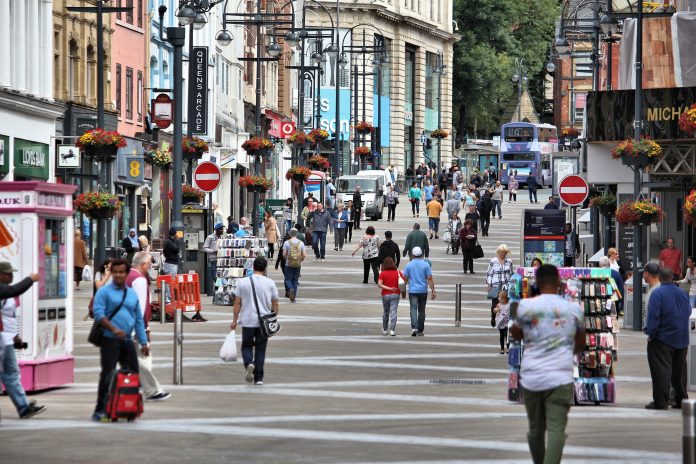Mark Halstead, partner at Red Flag, discusses why innovation and data are critical in an uncertain retail market after recent statistics revealed an increase in the number of retailers in decline
The demise of large high street retailers has been big news in recent times. With technology changing buying habits and macroeconomic uncertainty driven by Brexit, the doom-mongers are predicting the death of the High Street.
Rather than death, it is more like evolution- retailers need to understand the new environment to succeed. Tactics that may have worked a hundred years ago are becoming outdated. Technology and consumer buying habits are changing, and retailers need to evolve.
Tough climate for UK businesses
The Red Flag Alert Q2 2019 report shows that British businesses are feeling the effects of low consumer spending and uncertainty:
- 14% of active UK businesses are defined as operating in ‘significant financial distress’ – that’s 484,000 businesses
- In the past three years, company debt has increased by 122% to £66,000
- Businesses in critical financial distress have increased by 5%
Some of the sectors hit hardest are:
- Real estate and property, which saw a 15% year-on-year increase in businesses experiencing significant financial distress
- There were significant increases in the same metric for hotels and accommodation (8%), sport and health clubs (5%) and leisure and cultural activities (4%)
The retail sector
There has been some high profile High Street administrations this year including Debenhams, Patisserie Valerie and Bathstore, but retailers haven’t suffered as desperately as many predicted.
The Red Flag Alert data provides further context:
- In Q2 2019, the number of retailers in significant distress was 30,956, a marginal increase from 30.917 in the same period last year
- There were big year-on-year increases in significant distress for furniture retailers (23%), mail order and online retailers (12%) and specialist cosmetic and toiletry retailers (8%)
- Year-on-year distress decreased markedly for hearing aid retailers (46%), medical and orthopaedic goods (8%) and carpet and rug retailers (7%)
- There are still entrepreneurs opening retail stores; for example, there was a 2% increase in new electrical goods retailers and a 5% increase in florists and pet stores
In a challenging environment, many retailers are flourishing; let’s take a look at two:
Next
The Next share price increased by 50% in 2019, making it one of the biggest successes of the year, alongside Dunelm and Hotel Chocolat. Q2 results showed a profit upgrade of £10 million, and while Next is tight-lipped on what has driven profits, it is fair to assume that their online business has been a key contributor.
The online business model is driven by investment in AI search intelligence and better customer data that enables Next to personalise customers’ shopping experiences.
Lush
Cosmetics brand Lush has built its brand on a unique store experience and an ethically and socially conscious approach. Lush also continues to invest in its online store – in 2018, UK online penetration rose to 12.6%, although sales in the US fell by 7.5%. Although the last set of accounts showed a loss of £4 million (down from £22.7 million profit the year before), this was driven by the cost base of labour, premises and raw materials increasing – in response the business is restructuring its cost base.
Lush is however dedicated to its stores creating unique environments for customers. At the start of 2019, Lush opened its fourth Naked store in Manchester – the concept being very on-trend, namely packaging-free products.
The key to success
All two brands are making waves online, but they all see traditional retail locations as an important element of the value proposition. For retailers looking to succeed in the High Street, it’s becoming clear that differentiation is important. Whether it’s price, experience or efficiency, retailers need to provide value if they’re going to thrive.
Innovation
Lush is one of the best examples of innovation – they are continually pushing the envelope with new products and in-store experiences.
Next has invested in the quality of its stores and considerably modernised its retail offering. This approach, coupled with a more personalised shopping experience, has boosted profits. Data has enabled Next to improve personalisation markedly; let’s take a look at the importance of data.
Data
In retail, data is becoming more and more critical; here are some examples of how data has revolutionised the sector:
Consumer Insight: Retailers can track customer touchpoints across various marketing channels, providing them with better insights on customers than ever before. Large retailers have customer databases of millions, opening up considerable marketing opportunities.
Location Research: Retailers can look at the performance of every UK location, using data to take a look at what retailers are likely to succeed in a certain area. This helps retailers make difficult decisions on where to open or close stores.
Supply Chain Risk: Detailed financial health can be tracked in real-time for any UK business, and sophisticated health ratings predict insolvency, so for large retailers, it has never been easier to manage risk in the supply chain.
Protect Smaller Suppliers: For small businesses that supply large retailers, accessing financial health data on these large retailers is crucial. Detailed financial monitoring allows suppliers to see financial risk early and take a necessary action to avoid a potentially devastating large unpaid invoice.
With Brexit on the horizon and uncertainty set to stay for a while, its important retailers find and sustain competitive advantages in any way they can.
Mark Halstead
Partner











